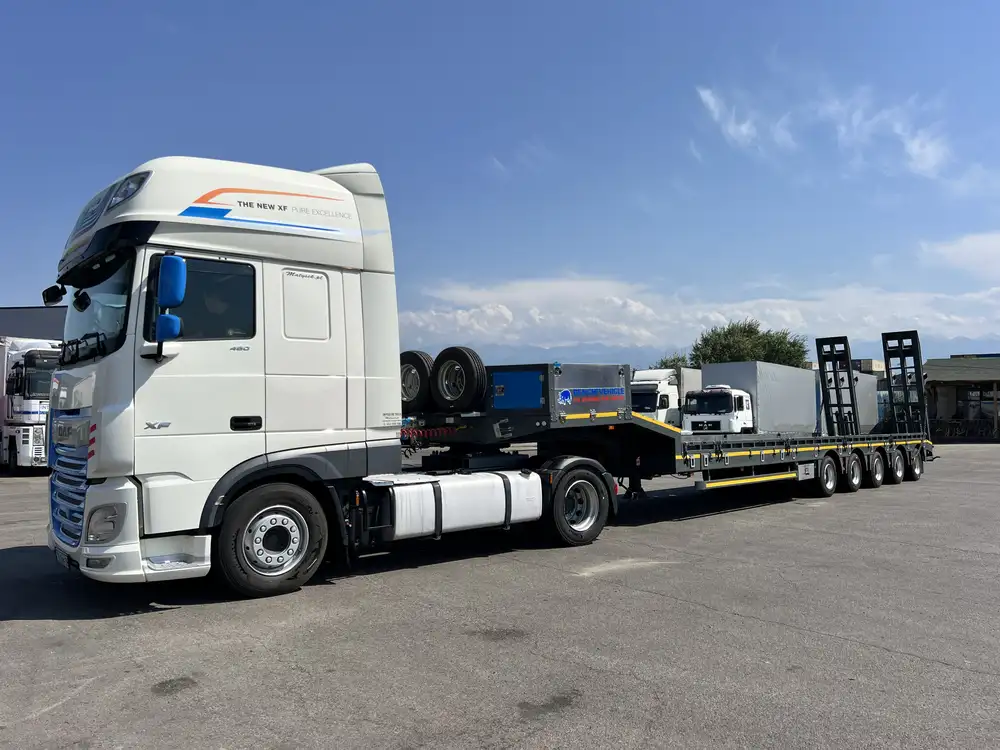Unloading heavy materials like rock from a flatbed trailer may seem daunting, yet with the right techniques, equipment, and safety measures, the process can be made efficient and hazard-free. Whether you are in construction, landscaping, or any other industry involving heavy materials, mastering the unloading process is crucial. Below, we explore detailed methodologies, tools, safety precautions, and best practices for unloading rock from a flatbed trailer effectively.
Understanding Your Flatbed Trailer
Types of Flatbed Trailers
| Type | Description | Pros | Cons |
|---|---|---|---|
| Standard Flatbed | A basic model used for various freight. | Versatile and easy to access. | Limited protection from the elements. |
| Step Deck | Lower deck for taller loads; ideal for heavy machinery. | Lower center of gravity. | Limited loading height. |
| Gooseneck | A hitch design that allows for sharp turns. | Provides better load stability. | Requires a compatible towing vehicle. |
Understanding the trailer type is crucial for unhitching and unloading processes. Considering the trailer’s shape, height, and load capacity can influence the methods you select for unloading.

Preparing for Unloading
Inspection
Before unloading, it’s essential to conduct a thorough inspection of the trailer and load to ensure safety. Check for:
- Load Stability: Ensure rocks are securely placed to prevent shifting.
- Trailer Condition: Look for any signs of wear or damage.
- Equipment Readiness: Ensure all equipment, such as straps and hydraulic systems, are functioning correctly.
Necessary Equipment
Here’s a list of essential equipment you might need:
- Forklift: Perfect for lifting heavy rocks.
- Skid Steer Loader: Versatile for different terrains.
- Rubber-Tired Loader: Provides mobility and power for heavy loads.
- Straps and Chains: For securing loads during transport.
- Wedges or Ramps: To create an incline for easier unloading.
Safety Measures
- Wear PPE: Always wear personal protective equipment such as gloves, steel-toed boots, hard hats, and reflective vests.
- Clear the Area: Make sure the unloading zone is free of personnel and obstacles.
- Use Spotters: Designate someone to assist and signal during the unloading process, particularly if machinery is involved.
Step-by-Step Unloading Procedures

Method 1: Using a Forklift
- Position the Forklift: Drive the forklift close to the trailer, ensuring it is aligned with the load.
- Lift the Forks: Insert the forks underneath the rocks gently to avoid damage.
- Extend the Load: Lift where necessary, keeping the load as low as possible while transporting it away.
- Unload Carefully: Move to the designated unloading spot and lower the load evenly.
Method 2: Using a Skid Steer Loader
- Drive into Position: Approach the trailer head-on and line up with the load.
- Lift the Load: Use the loader’s arms to engage with the rocks securely. Ensure you have a proper grip.
- Transport the Load: Drive slowly and make sure to balance your load while moving.
- Depositing: Release the rocks in the intended spot, ensuring the area is clear.
Method 3: Manual Unloading
In some scenarios where machinery cannot be used:
- Assess Load: Determine the number of workers needed to handle the rocks effectively.
- Use Leveraging Techniques: Employ pry bars to help lift and shift heavier boulders into a wheelbarrow or on the ground.
- Stack Carefully: Stack or organize rocks in a manner that makes it easier for future handling or transportation.

Special Considerations for Different Rock Types
While the methods above are efficient in most scenarios, specific types of rock may necessitate tailored strategies:
Gravel
- Easy to dump; often poured directly from the truck bed using gravity.
- Use a shovel and wheelbarrow for placement if necessary.
Boulders
- Heavy and cumbersome; leverage equipment like cranes or heavy-duty forklifts.
- Always ensure a safety barrier is in place to prevent accidents during the unloading of boulders.

Crushed Stone
- More manageable than boulders; often uses simple dumping or loading techniques.
- Ideal for bulk delivery, consider layering for ease of access and placement.
Monitoring the Unloading Process
During the unloading process, keep constant communication among workers. Watch for any signs of potential hazards, such as shifting materials, unstable terrain, or equipment malfunction. If something seems off, stop the process immediately and assess the situation.
Troubleshooting Common Issues
| Issue | Solution |
|---|---|
| Load Shift During Transport | Use additional securing straps or chains before unloading. |
| Equipment Malfunction | Always keep a maintenance checklist and service equipment regularly. |
| Weather Conditions | In wet conditions, ensure proper traction with added weights or choose a more stable unloading site. |

Effective Communication
A major part of unloading rock safely involves communication. Employ these practices:
- Designate Clear Roles: Each team member should know their responsibilities.
- Use Walkie-Talkies or Hand Signals: Ensure everyone can communicate efficiently, especially in loud environments.
- Regular Briefings: Conduct pre-unloading meetings to discuss the plan and any possible impediments.
Conclusion
Understanding how to unload rock from a flatbed trailer requires knowledge of the trailer type, safe operational practices, and various unloading methods tailored to the material being transported. By employing the techniques discussed, utilizing the necessary equipment, and adhering to safety protocols, we can optimize the unloading process, minimize potential hazards, and improve overall efficiency.
Staying vigilant and being prepared for unexpected challenges will ensure successful operations at every unloading site. Elevate your expertise and practices, and you’ll transform a potentially difficult task into a streamlined process, enhancing productivity and safety.



